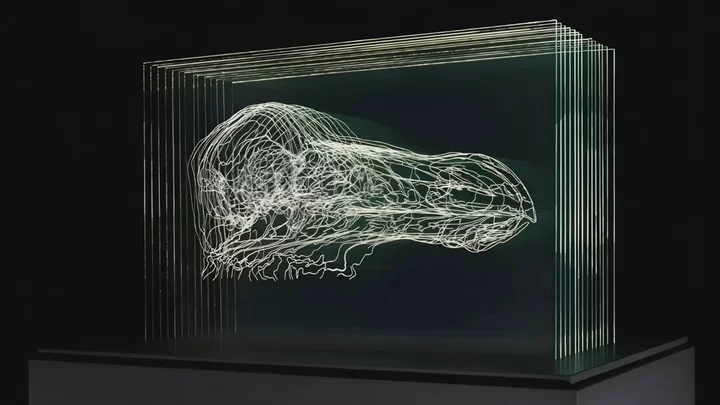Dodo
The sculpture of The Oxford Dodo, created in glass by the artist Angela Palmer, was created in collaboration with Oxford University’s Natural History Museum.
The sculpture of the dodo - the most iconic symbol of man-made extinction - is based on details taken from cross-sectional CT scans which the artist hand engraved onto 14 sheets of glass. The result is an ethereal and striking three-dimensional ‘drawing’ floating within the sculpture.
The Oxford Dodo is one of only three specimens preserved today, and is the only one in the world with surviving remains of soft tissue.
During scanning, conducted by a forensic unit at Warwick University, an unexpected twist emerged: lead shot was discovered in the neck and back of the head of the Dodo, showing, after analysis of the shot, that it had been killed with a 17th-century shotgun.
It was previously believed that the Oxford Dodo was the remains of a bird recorded as being kept alive in a 17th-century London townhouse. ‘This discovery reveals important new information about the history of the Oxford Dodo, which is an important specimen for biology, and through its connections with Lewis Carroll and Alice’s Adventures in Wonderland of great cultural significance too,’ said Professor Paul Smith, former Museum director.






